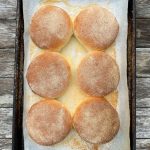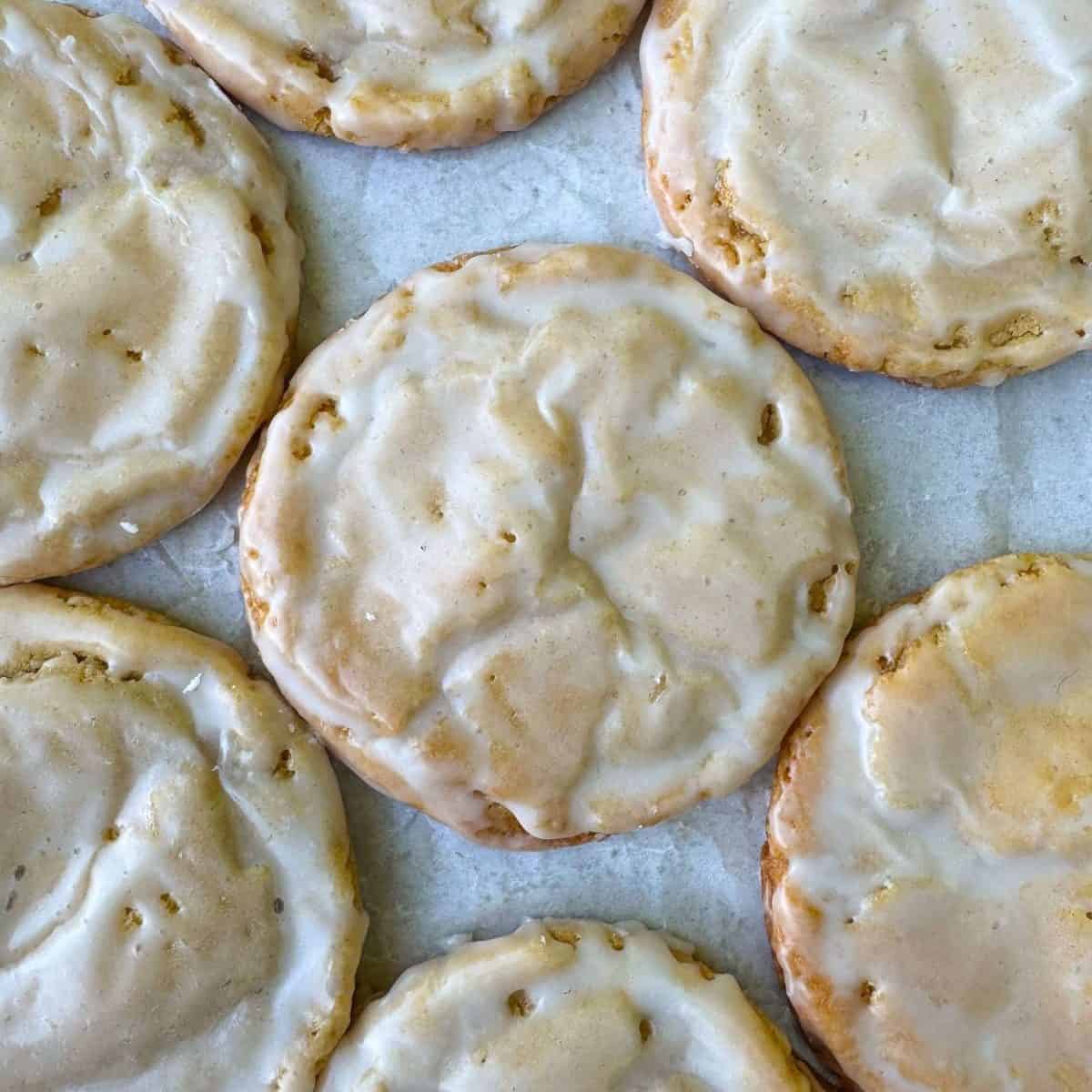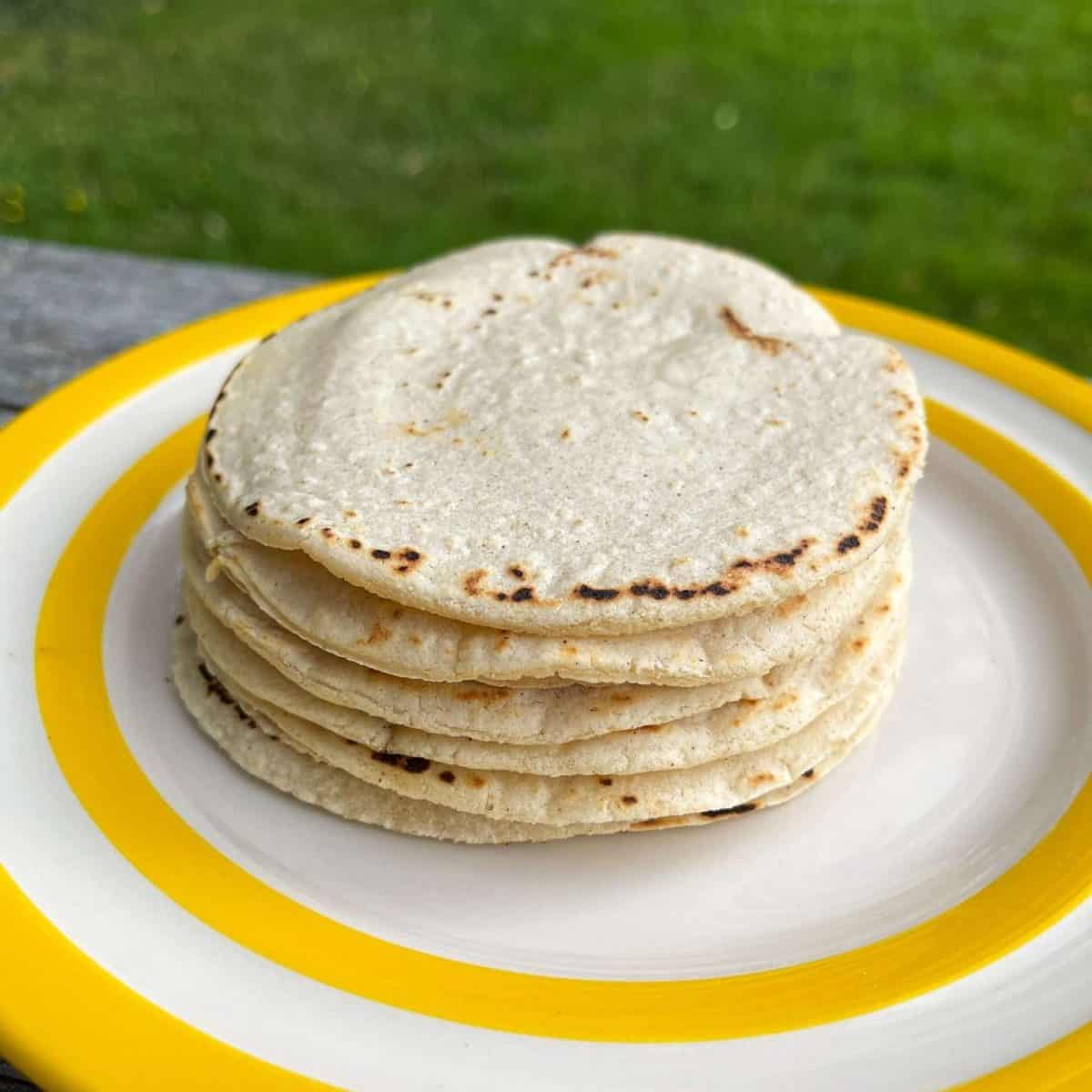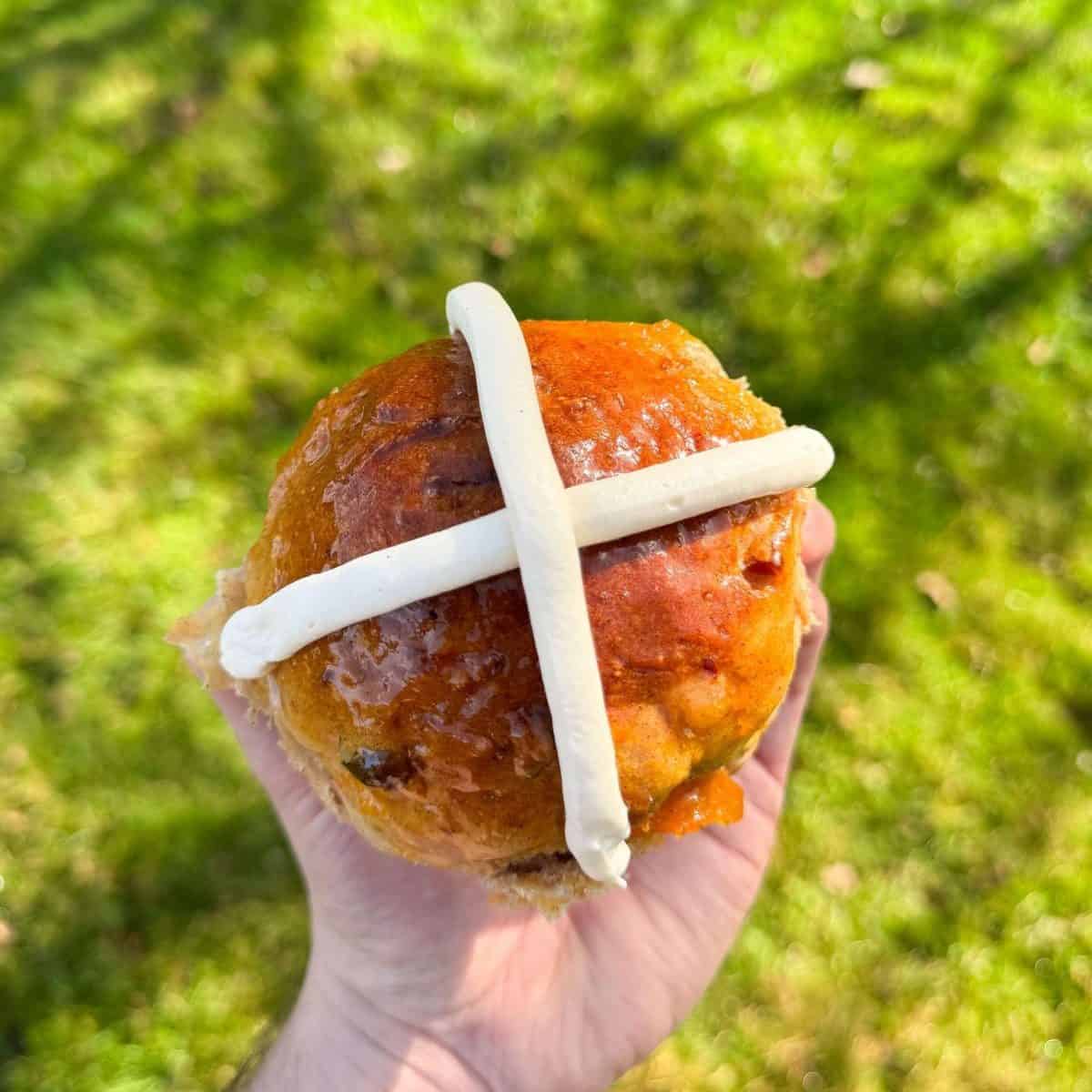Scottish Morning Rolls
Here’s how to make a batch of traditional Scottish morning rolls that are incredibly soft, with a deep, slightly chewy crust. They’re perfect for breakfasts!
This post contains affiliate links.
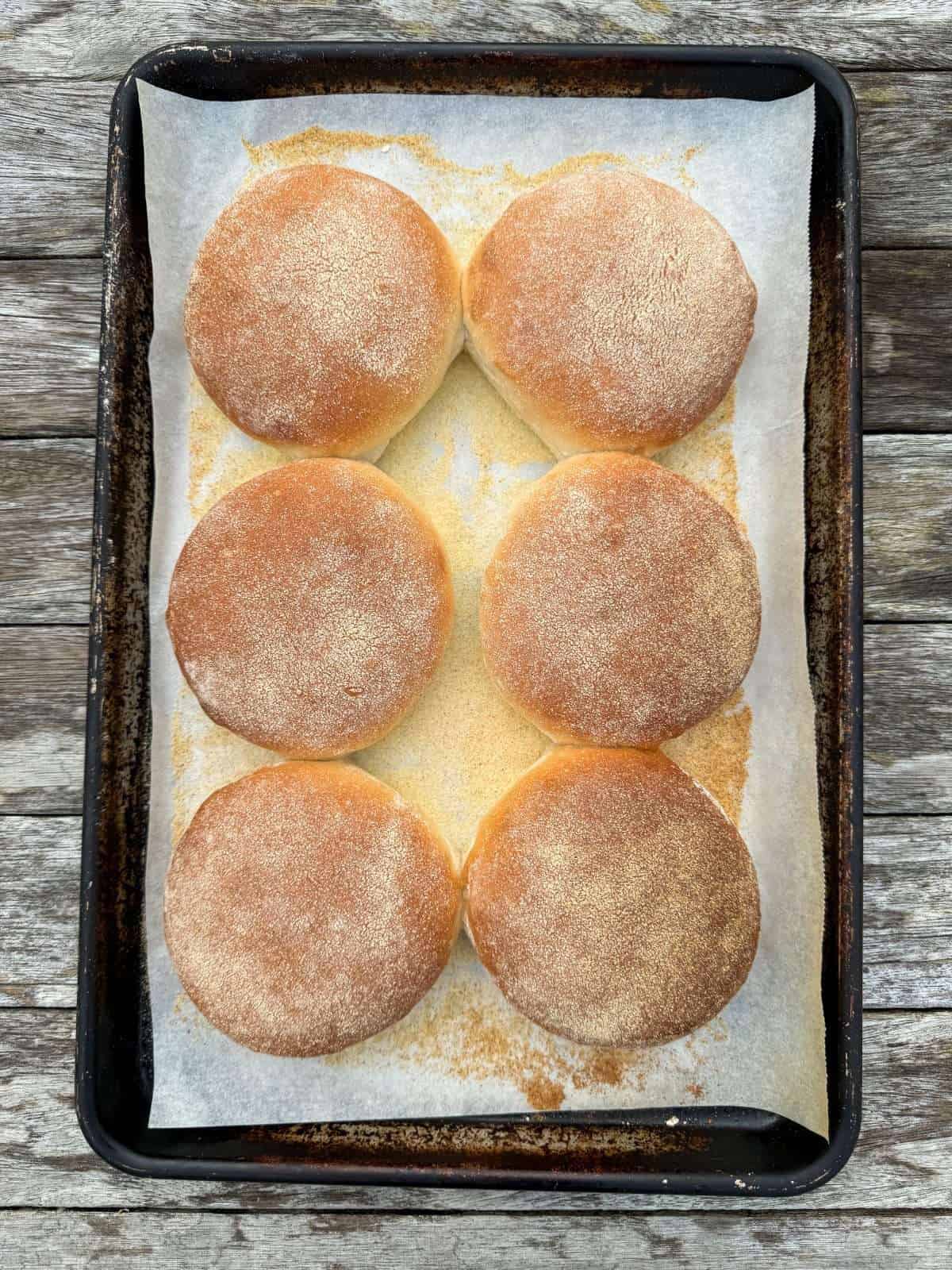
This recipes make a batch of Scottish morning rolls that are soft, slightly chewy & perfect for breakfast (and lunches and dinners!). Fill these traditional Scottish rolls with plenty of butter, fried square sausage (Lorne), black pudding, haggis & a runny fried egg and you’re in or a treat!
What Are Scottish Morning Rolls?
Scottish morning rolls get their name from the time of the day that are sold. These bread rolls are baked fresh daily in Scottish bakeries & are a staple part of a Scottish breakfast. They’re incredibly soft on the inside, have a deep, slightly chewy crust & make the most amazing fried breakfast sandwiches! Morning rolls can also be made into well fired rolls (another traditional Scottish bread roll) by baking them until they’re burnt & blackened on top.
For more recipes, take a look at our ever growing collection of bread recipes! There’s buns, bagels, sourdough, pizza doughs, doughnuts & lots more…
What You’ll Need
- Bread Flour – You’ll need a strong white bread flour for these rolls. It’s best to use a flour with a protein content of at least 13%. I used a Canadian bread flour from Shipton Mill.
- Yeast – We’re using dried active yeast for this recipe which needs to be activated in warm water before being used in the dough.
- Lard – Adding softened lard to our dough gives the rolls a softer texture & a savoury flavour. Butter would also work but lard is the more traditional fat to use.
- Sea Salt – A good quality sea salt is best for bread doughs. I like to use Maldon.
- Sugar – A small amount of sugar adds flavour to the dough & gives the rolls a deeper colour once baked.
- Semolina – Sprinkling the rolls with semolina before baking gives them extra texture & a crisp crust once baked. Rice flour will also work.

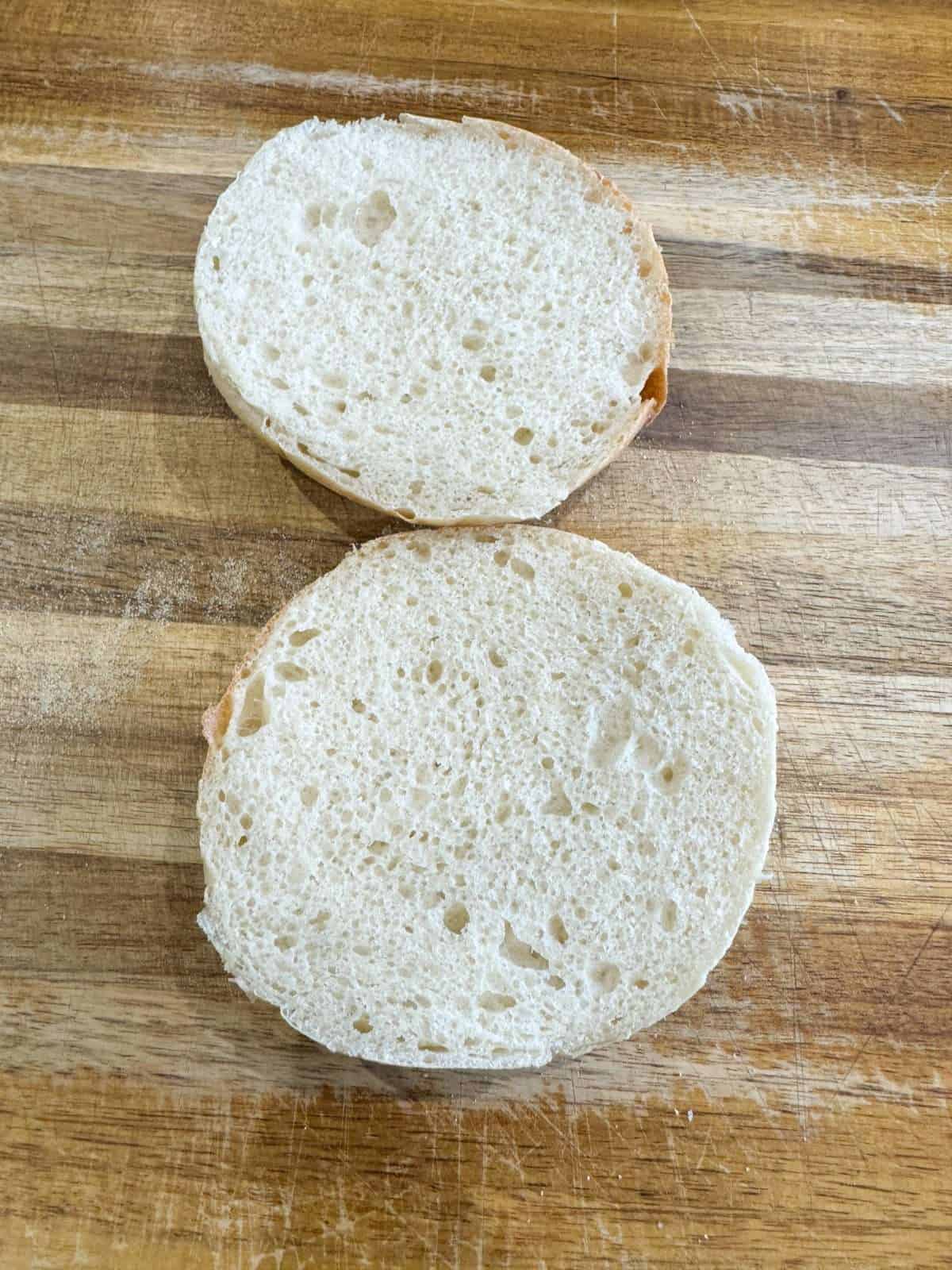
How To Make Scottish Morning Rolls
The full, printable recipe card for these bread rolls can be found at the bottom of this post! Here’s a quick rundown of the recipe…
- Activate Yeast
We’re using dried active yeast which needs to be activated before being used. To do this, we take the water from our dough, warm it to 38°c/100°f then whisk in the dried yeast. We leave this somewhere warm for 5-10 minutes, until it goes frothy then it’s ready to use. - Mix Dough
To make the dough, we mix flour with salt, sugar & the activated yeast (using a stand mixer with a dough hook attached), until a smooth dough forms then we mix in softened lard. We keep kneading the dough for another 5 minutes or so, until it passes the windowpane test then we transfer it to a lightly oiled bowl. - First Rise
We let the dough prove at room temperature for 1-1½ hours, until it has doubled in size. - Shaping
Once risen, we knock the dough back then portion into 6 equal pieces, each one should weigh around 100 grams. Next, we take a piece of dough & shape into a ball. We then use a rolling pin to roll the dough out into a disc that’s roughly 3cm wide & 2cm thick. Once shaped, we place the rolls onto a tray dusted with semolina. - Second Rise
Next, we dust the rolls with semolina then let them rise for another 45 minutes or so, until they are well risen & touching each other. - Baking
We cook the morning rolls at 230°c/446°f for 10-12 minutes, until they are a deep, golden brown on top then let them cool on the tray before serving.
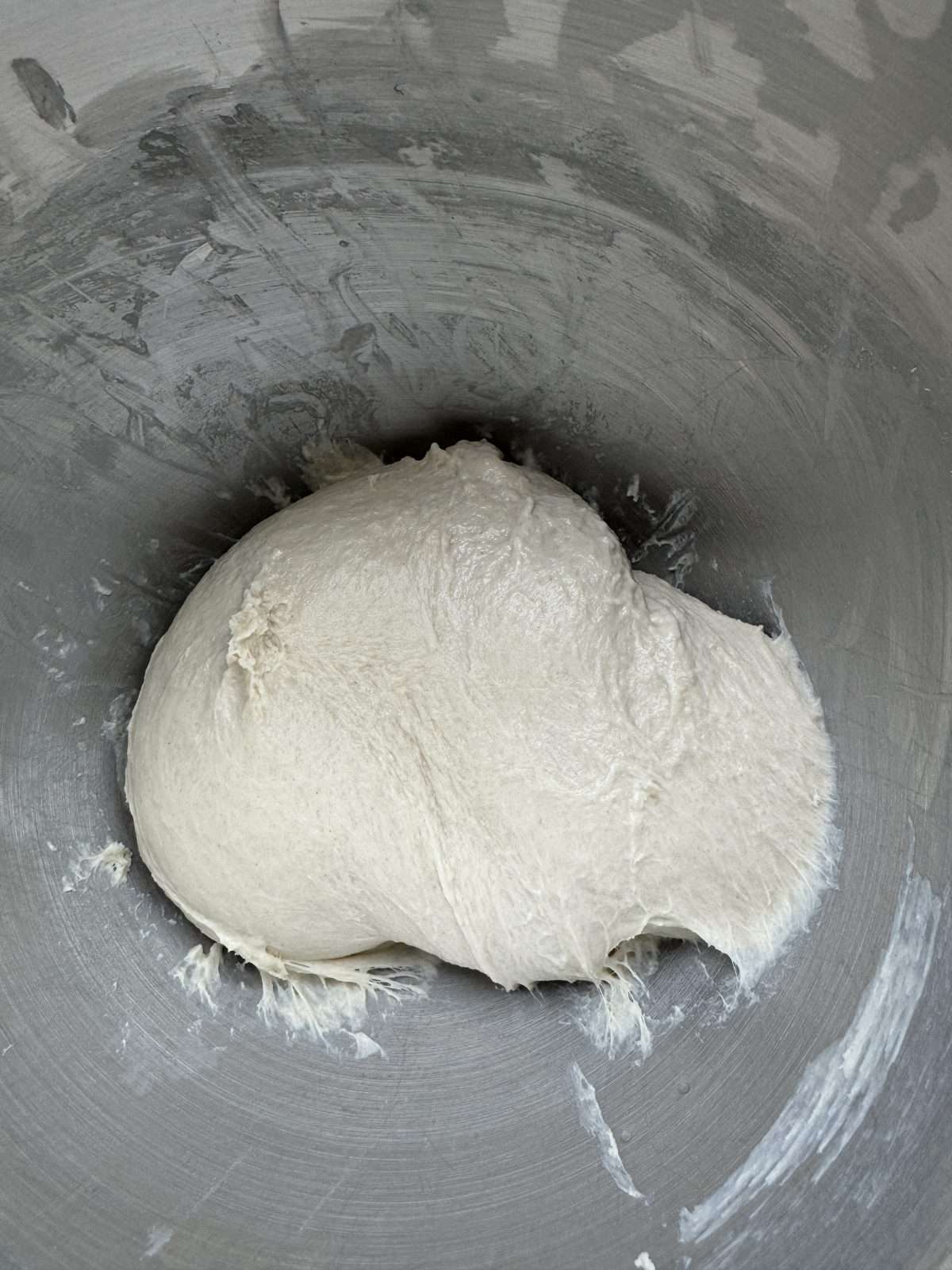
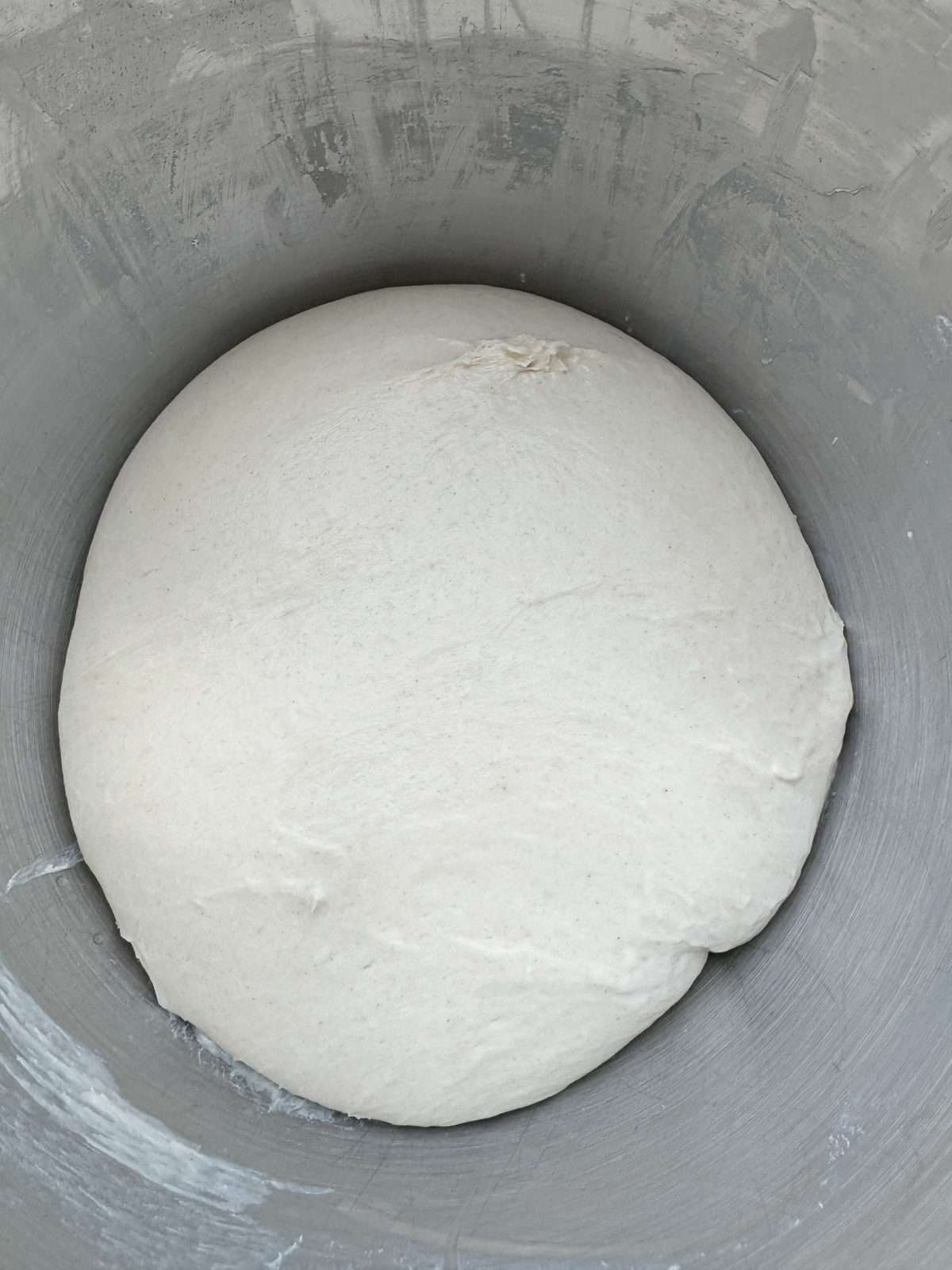
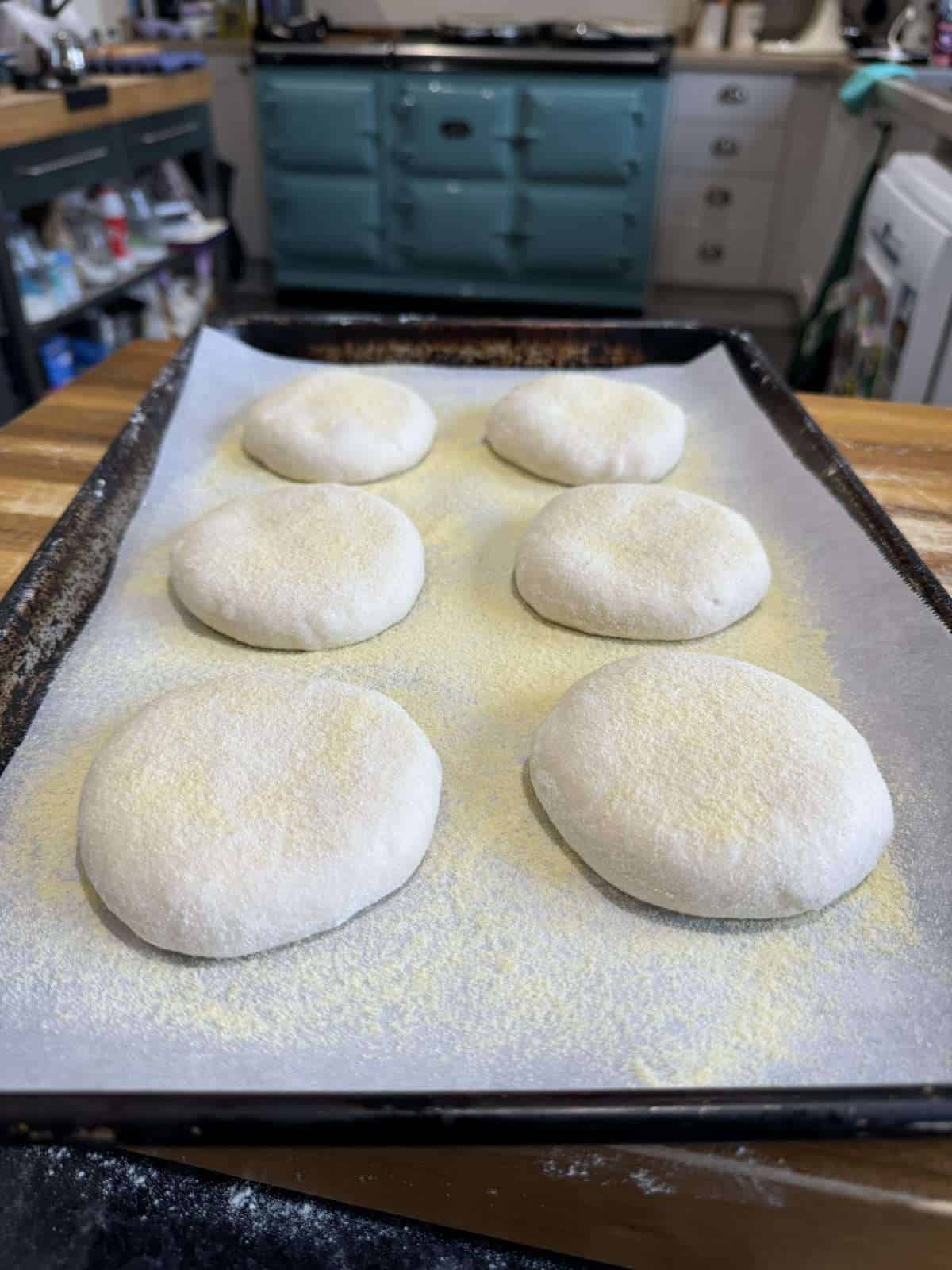
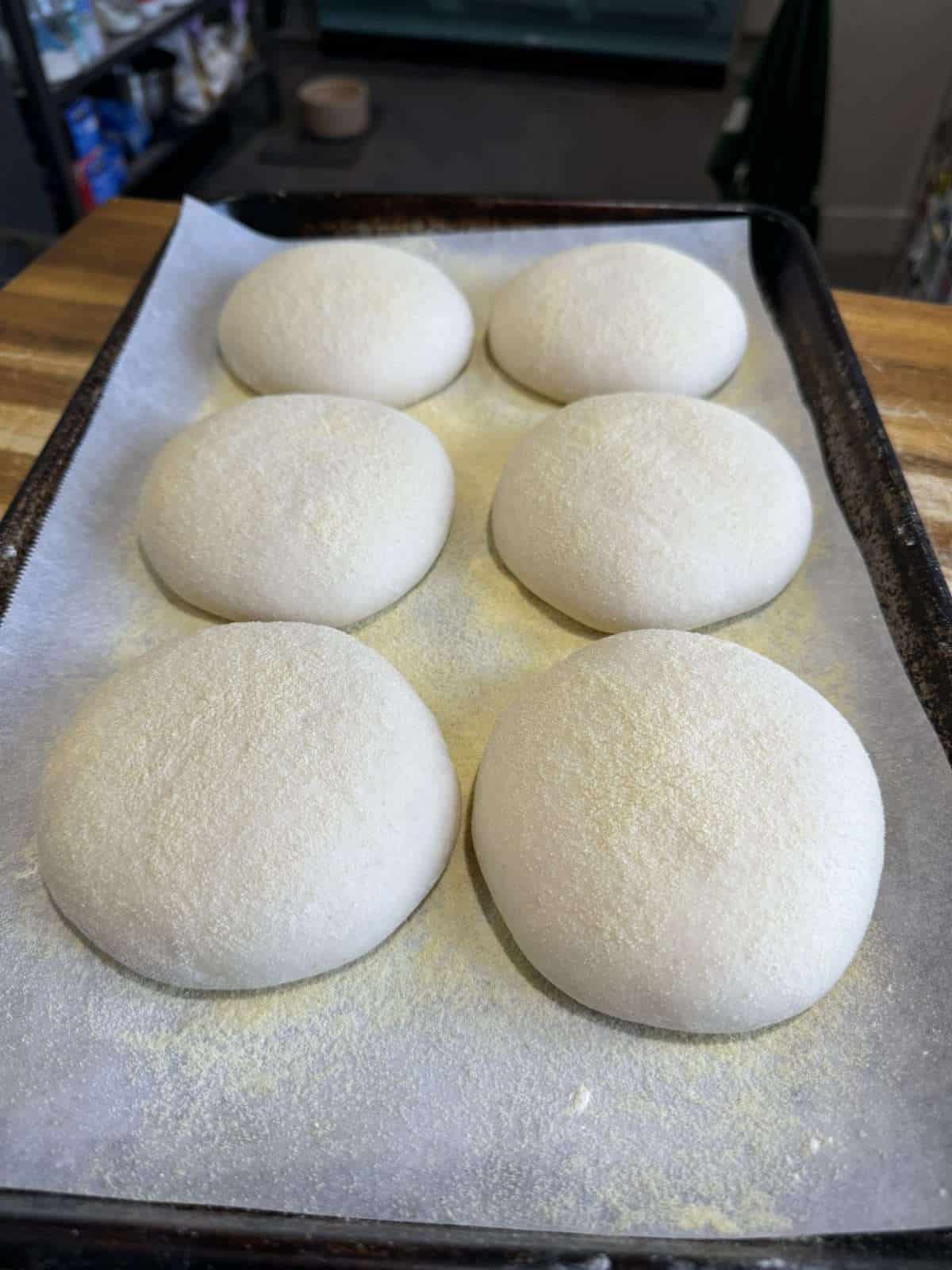
The Windowpane Test
The best way to assess the gluten development in your dough is by using the windowpane test. Here, you take a small piece of dough & stretch it between your fingers. If it stretches thin enough so that you are able to see through it, enough gluten has been developed. If it tears, more kneading is required.
How To Shape Scottish Morning Rolls
We shape our morning rolls like you normally would when making bread rolls/burger buns except we’re also rolling them out slightly with a rolling pin after shaping & dusting them with semolina. This is what gives morning rolls their crisp crust.
Here’s how to shape them…
- Knock the dough back then divide into 100 gram pieces.
- Take a piece of dough & bring the edges into the middle. Flip the dough over & use cupped hands to shape into a tight ball. Dragging the seam on the work surface helps increase surface tension.
- Using a rolling pin, roll the ball of dough out into a disc that is roughly 3 cm wide & 2cm thick.
- Place the dough onto a lined baking tray (dusted with semolina as well) then repeat the shaping process with the remaining dough.
- Once shaped, lightly sprinkle the rolls with semolina then leave to rise.
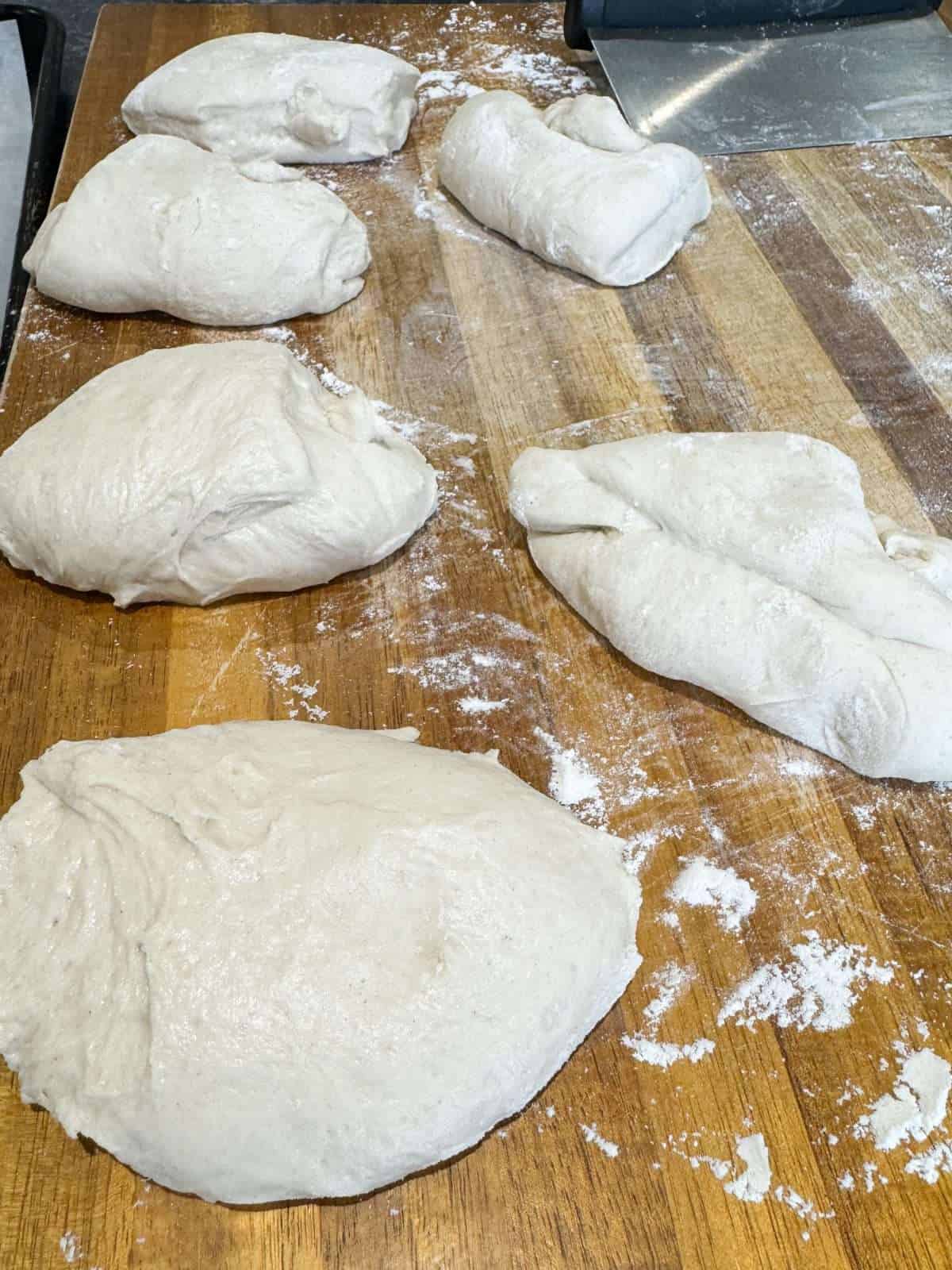
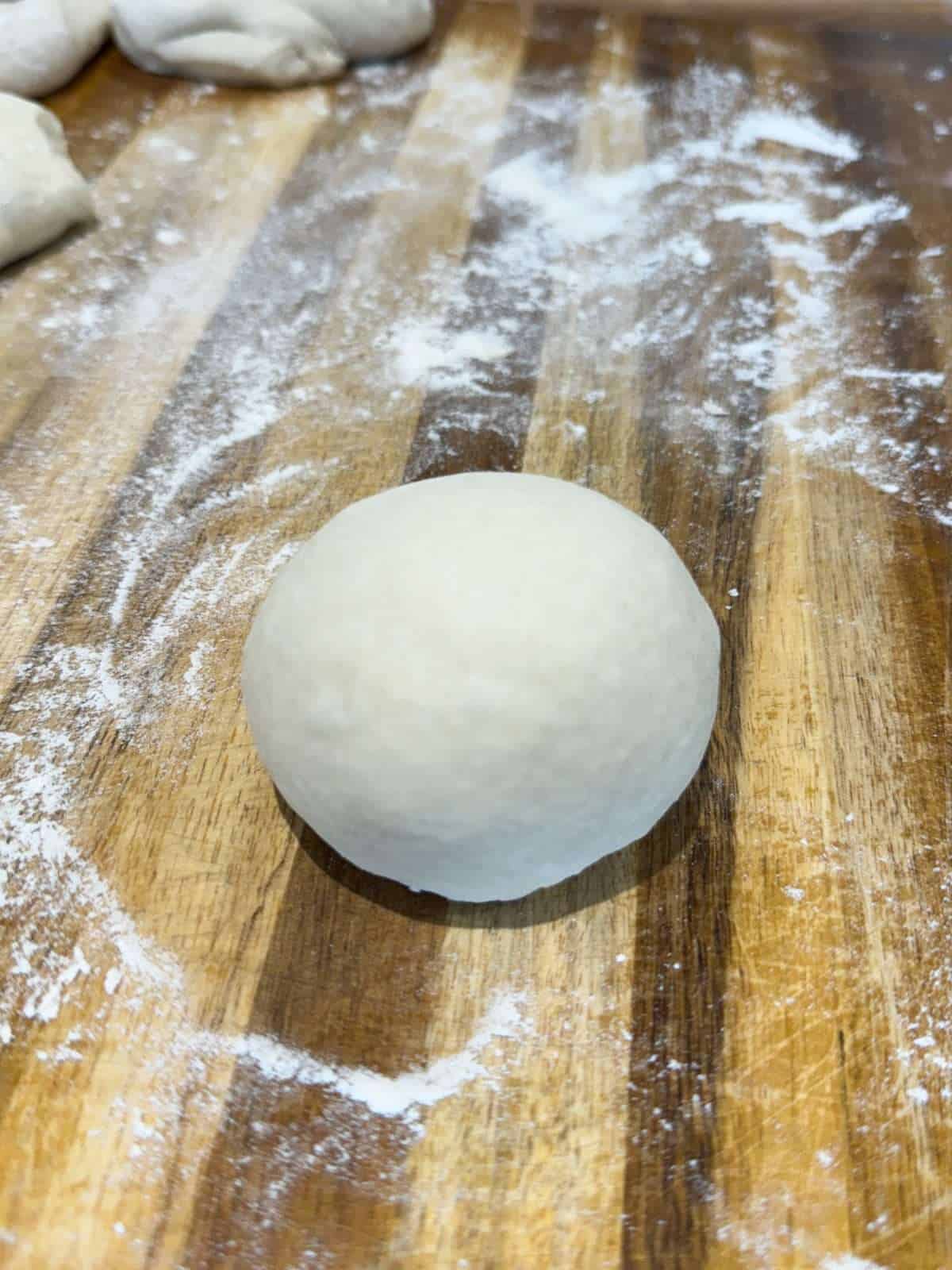
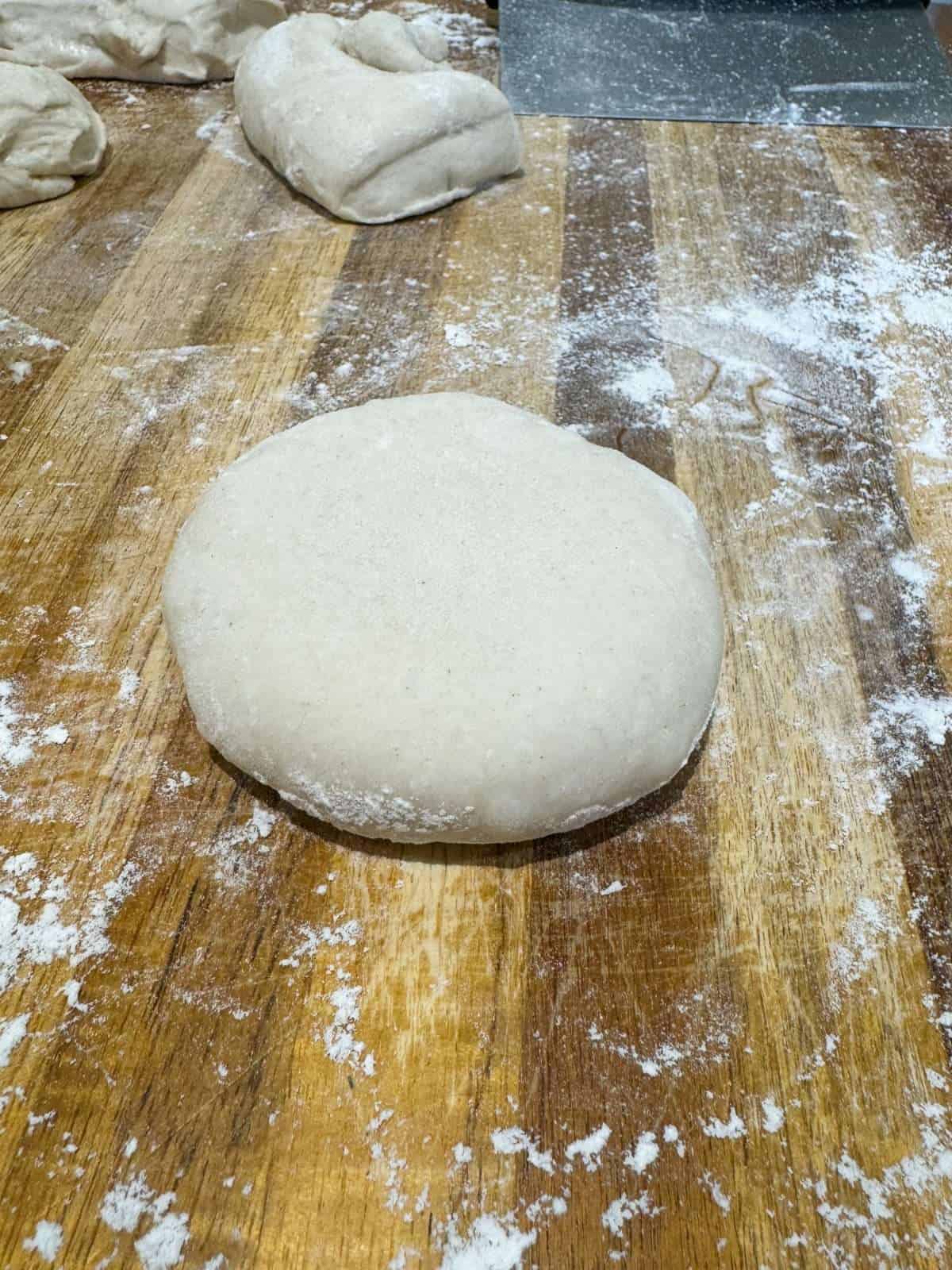
Morning Rolls Tips & Tricks
- Add lard to the bread dough for a softer texture & a deep, savoury flavour.
- Sprinkle your morning rolls with semolina before baking for a crisp crust.
- Bake the morning rolls at a high temperature, to give their crust a deeper colour & flavour.
- Serve your Scottish morning rolls whilst they’re fresh, with plenty of butter!
Serving Suggestions
Morning rolls are a staple part of a Scottish breakfast table & are fantastic when filled with components of a Scottish fried breakfast. This includes crispy fried bacon, black pudding, square sausage (Lorne), fried eggs & haggis. Morning rolls aren’t just eaten at breakfast though, they’re great served at lunch or dinner as well.
I made a seriously tasty sandwich with my morning rolls! This was filled with square sausage, beer battered black pudding, a fried egg & plenty of brown sauce…
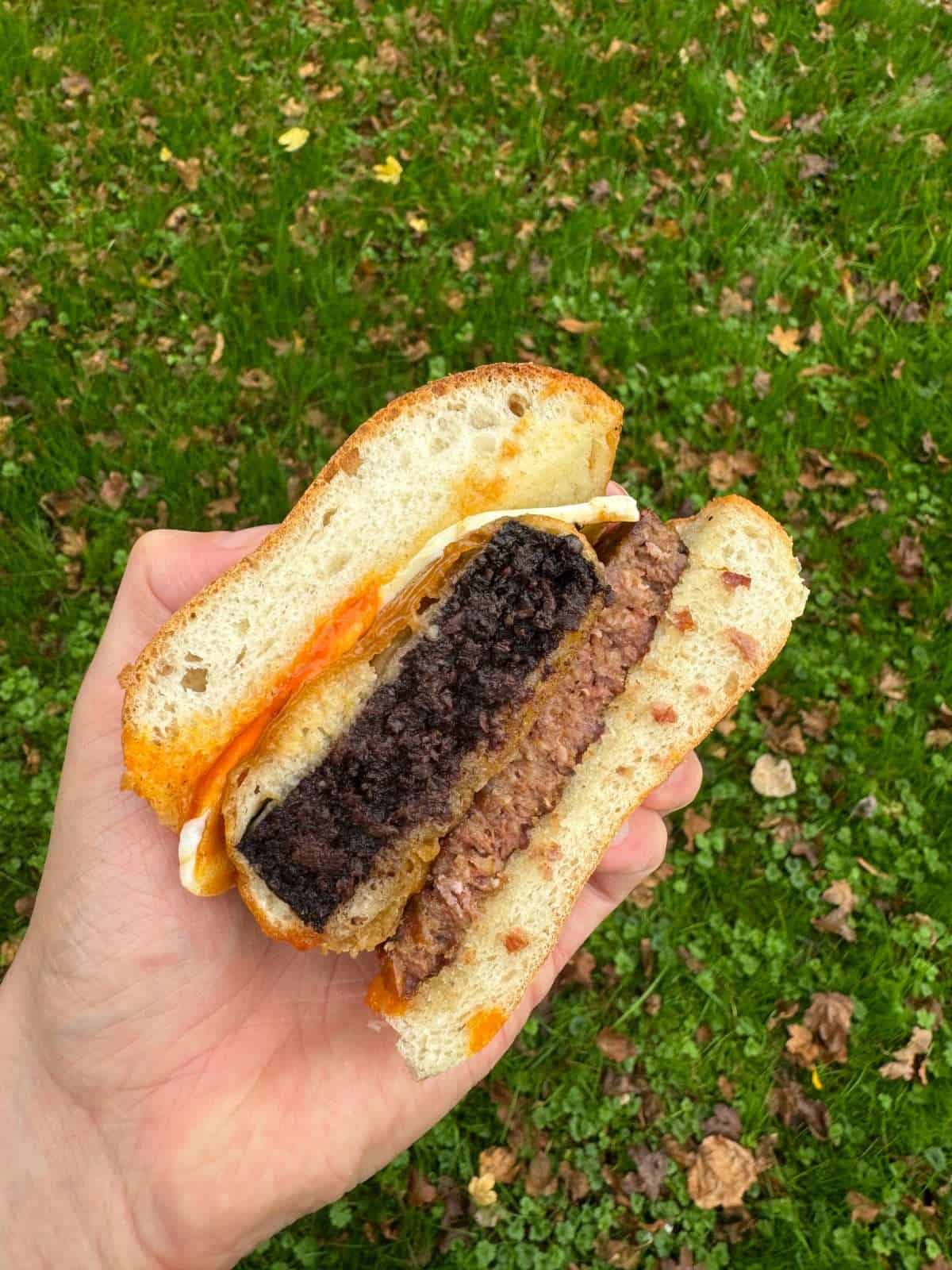
Frequently Asked Questions
Scottish morning rolls are best eaten on the day that they were made but will keep for another day or two when stored in an airtight container.
Well fired rolls are morning rolls that have been baked at a high temperature until they get a blackened, overcooked crust that’s chewy & slightly bitter. You can find well fired rolls in most Scottish bakeries & newsagents.
To make Scottish morning rolls, you’ll need to use a strong white bread flour. Using a flour with a protein content around 13% is best.
How To Bake Morning Rolls In An Aga
With all of my recipes, I include cooking instructions for conventional ovens, fan ovens & also Agas. Here’s how to cook this recipe on an Aga…
Bake the morning rolls in the roasting oven, on the second from top set of runners. Turn the baking tray around after 10 minutes then bake for another 2 minutes, so that the rolls colour evenly.
Equipment Used
Please note that these are affiliate links & I may make a small commission if you make a purchase using these links, at no extra cost to you. For more information, click here.
More Bread Recipes To Try!
- Tangzhong Dinner Rolls
- Potato Burger Buns
- Potato Sandwich Bread
- Same Day Focaccia
- Overnight Tangzhong Doughnuts
- 3 Day Poolish Pizza Dough
If you have enjoyed this recipe for Scottish morning rolls, it would mean a lot if you could leave a review & rating. And if you’d like to stay up to date with future recipes, follow us on Instagram & TikTok!
Scottish Morning Rolls
Equipment
- Digital Food Probe
- Stand Mixer
- Dough Scraper
- Rolling Pin
- Baking Tray
Ingredients
- 350 g Strong White Bread Flour (See Notes)
- 7 g Fine Sea Salt
- 10 g Caster Sugar
- 5 g Dried Active Yeast (See Notes)
- 230 g Water (@38°c/100°f)
- 30 g Lard (At Room Temperature)
- Fine Semolina (To Sprinkle On Top)
Instructions
Dough
- Add the flour, salt & sugar into the bowl of a stand mixer, whisk to combine then set aside.
- Next, add the water & yeast into a jug, whisk to combine then leave for 5-10 minutes, to go frothy.
- Give the activated yeast another whisk then pour into the flour. Mix on a medium speed, using the dough hook attachment until the dough is smooth & starting to come away from the sides of the bowl. This will take 3-4 minutes.
- With the mixer still going, add in the lard a small amount at a time, incorporating each piece fully before adding more. Once all the lard has been incorporated, keep mixing until the dough passes the window pane test. This will take another 5-10 minutes of kneading.
- Transfer the dough to a lightly oiled bowl, cover with clingfilm or a tea towel & leave to double in size at room temperature. This will take 1-1½ hours.
Shaping
- Line a large baking tray with baking parchment then dust with semolina. Set this aside for now.
- Once risen, knock the dough back then transfer to a lightly floured work surface. Using a bench scraper, divide the dough into 6 equal pieces, each weighing around 100 grams.
- Take a piece of dough & bring the edges into the middle. Flip the dough over & use cupped hands to shape into a tight ball. Dragging the seam on the work surface helps increase surface tension.
- Using a rolling pin, roll the ball of dough out into a disc that is roughly 3 cm wide & 2cm thick. Place the dough onto the lined baking tray then repeat the shaping process with the remaining dough.Make sure to leave a couple of centimetres space between each roll. Arrange the rolls so that they're in 3 rows of 2.
- Once shaped, lightly sprinkle the rolls with semolina then cover with another baking tray (flipped upside down) or loosely with clingfilm. Leave to rise at room temperature until they've increased in size by 50%. This will take 45 minutes – 1 hour.The rolls will be touching slightly once proved.
Baking
- Whilst your rolls are proving, preheat an oven to 230°c/210°c fan (446°f/410°f).
- Once your rolls are risen, bake them in the preheated oven for 10-12 minutes, until they're a deep golden brown on top.
- Let the rolls cool on the tray then serve!

